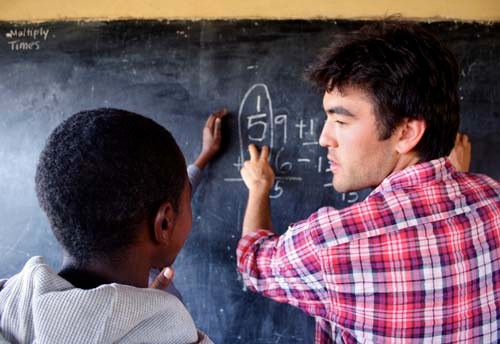
By creating what he calls “a new way of giving” for the Internet age, a recent Brown University graduate is helping young people from underprivileged nations continue their education by putting donors in direct contact with the youths who need their assistance.
“This is what giving could and should look like, now that we have the ability to connect people,” said Matt Severson, founder of The School Fund and a 2011 Brown graduate now living in California, where he’s been working for Google Inc. since July.
The School Fund is a unique online platform (www.theschoolfund.org) that connects donors from around the world with children in underprivileged areas.
Severson started the fund in 2009 because he was so moved by the experience of a boy he just happened to meet in the United Republic of Tanzania. The School Fund to date has helped approximately 150 youths in 13 underprivileged countries attend secondary school. The nonprofit fund, with two part-time paid workers and about 20 volunteers, has spawned five university clubs across the nation and six high school clubs.
A native of Palo Alto, Calif., Severson and his family visited Tanzania in 2007, the summer after he graduated from high school, when he met a boy named John. “He was outside of our hotel and he was cutting grass for his cow,” Severson related. The young American struck up a conversation with the boy and found out, after a while, that John’s ambitions were so great he hoped to become president of Tanzania someday.
But there was one hitch.
John did not have the money to pay for his secondary education in Tanzania, a grand sum of $150 for the first year of what Americans call high school. Severson’s family gave John the money for school, but the encounter made him think.
“We came home and the more I thought about it, the more I realized there were probably a lot of ‘Johns’ in the world,” Severson said, remarking on “lost opportunities” and “smart minds” withering away for lack of a few hundred dollars. He decided to build a website aimed at matching donors with individuals like John on a one-to-one basis. The fund started by helping 30 students the first year and now works with about 170 annually.
This compares to an average income in many places of about $1,000 a year, Zaleski said, and the parents of some youngsters helped by the fund live on as little as $2 each day. “And those are the lucky ones,” she added, noting other youths have no parents alive or they live in orphanages because their parents cannot afford to take care of them. “We’re trying to create a world where opportunity is not a function of privilege,” Zaleski said.
What proponents say makes The School Fund different from other educational foundations involves three components: transparency, accountability and communication.
“There is a clear breakdown of all costs on our website, so you can see where your money is going, which is rare in international humanitarian aid,” said Laila Handoo, a sophomore at Brown who grew up in Maryland and works on outreach for The School Fund. A donor also can check a student’s profile to see how an individual’s funds are spent.
“One-hundred percent of all donations to students go directly to the students the money is intended to help,” Zaleski said.
The School Fund uses receipts posted on its website to let donors know when their funds are received either by an individual student or a school.
And students are required to communicate at least once a month with donors and others by keeping online journals. •












